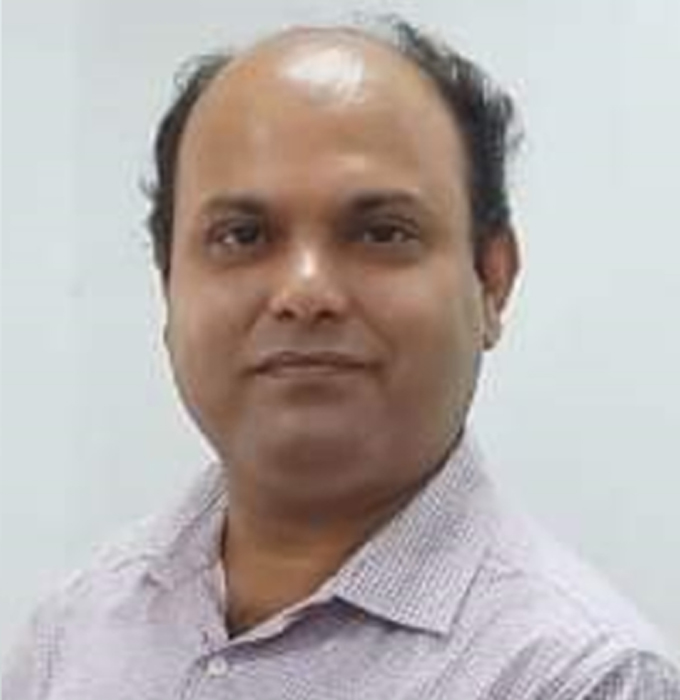1.Nandi SS*, Sawant SA, Gohil T, Sangal L, Patel D, Krishnasamy K, Ghoshal U, Harvey P, Deshpande JM. Poliovirus non-permissive CD155 knockout cells derived from RD cell line using CRISPR technology for handling poliovirus potentially infectious materials in virology laboratories. J. Med. Virol. 2022; 1–9. DOI: 10.1002/jmv.27897 (Impact factor 20.69)
2. Nandi SS*, Lambe UP, Sarkar K, Sawant S, Deshpande J. A rapid point of care CC16 kit for screening of occupational silica dust exposed workers for early detection of silicosis/silico- tuberculosis. Nature Scientific Reports. 2021 Dec 6;11(1):1-8. DOI: 10.1038/s41598-021- 02392-y. (Impact factor 5.516)
3. Nandi SS*, Lambe UP, Sawant SA, Gohil T, Deshpande J. Development of a RT-LAMP assay for detection of SARS-CoV-2. Ind. J. Med. Res. 2022. DOI: 10.4103/ijmr.IJMR_713_21 (Impact factor 5.274)
4.Nandi SS*, Bhattacharya I, Lambe U, Sawant S, Gohil T, Yadavalli T, Shukla D. Ophthalmic Manifestations of COVID-19 and its Association with Heparan Sulfate Receptors. TOOAJ 3(3) 271-283. DOI: 10.32474/TOOAJ.2021.03.000161. (Impact factor 3.1)
5. Manisha Dhanshetty, Supriya Kusale, Vijayshree Chavan, Shraddha Shewale, Upendra P. Lambe, Sonali A. Sawant, Shyam Sundar Nandi, Sujoy Saha, Somnath Holkar, Jagruti Jankar, Ramhari Somkuwar and Kaushik Banerjee. Rapid monitoring of SARS-CoV-2 on fruits and vegetables using reverse-transcription loop-mediated isothermal amplification assay. Current Science 2022, Vol. 124, No. 8; 938-945. Impact Factor 1.169
6. Pal D, Raj K, Nandi SS, Sinha S, Mishra A, Mondal A, Lagoa R, Burcher JT, Bishayee A. Potential of Synthetic and Natural Compounds as Novel Histone Deacetylase Inhibitors for the Treatment of Hematological Malignancies. Cancers. 2023; 15(10):2808. https://doi.org/10.3390/cancers15102808. (Impact Factor 5.2)
7. Nandi SS*, Gohil T, Sawant SA, Lambe UP, Ghosh S, Jana S. CD155: A Key Receptor Playing Diversified Roles. Curr. mol. med. 2022. 22 (7) 594 – 607. DOI: 10.2174/1566524021666210910112906. (Impact factor 2.222)
8. Bellamkonda N, Lambe UP, Sawant S, Nandi SS*, Chakraborty, C.; Shukla, D. Immune Response to SARS-CoV-2 Vaccines. Biomedicines 2022, 10, 1464. DOI: org/10.3390/biomedicines10071464. (Impact factor 6)
9. Chakraborty C, Bhattacharya M, Nandi SS, Mohapatra RK, Dhama K, Agoramoorthy G. Appearance and re-appearance of zoonotic disease during the pandemic period: long-term monitoring and analysis of zoonosis is crucial to confirm the animal origin of SARS-CoV-2 and monkeypox virus. Vet Q. 2022, 7;42(1):119-124. DOI: 10.1080/01652176.2022.2086718 (Impact factor 3.32)
10. Chakraborty C, Sharma AR, Bhattacharya M, Mallik B, Nandi SS*, Lee SS. Comparative genomics, evolutionary epidemiology, and RBD-hACE2 receptor binding pattern in B.1.1.7 (Alpha) and B.1.617.2 (Delta) related to their pandemic response in UK and India. Infect Genet Evol. 2022;101:105282. DOI: 10.1016/j.meegid.2022.105282. (Impact factor 3.342
11. Chakraborty C, Bhattacharya M, Sharma AR, Roy SS, Islam MA, Chakraborty S, Nandi SS*, Dhama K. Deep learning research should be encouraged for diagnosis and treatment of antibiotic resistance of microbial infections in treatment associated emergencies in hospitals. International Journal of Surgery. 2022, 24:106857. DOI: 10.1016/j.ijsu.2022.106857 (Impact factor 13.4)
12. Wu D, Koganti R, Lambe UP, Yadavalli T, Nandi SS*, Shukla D. Vaccines and Therapies in Development for SARS-CoV-2 Infections. J Clin Med. 2020 Jun 16; 9(6):1885. PMID: 32560227; PMCID: PMC355822. DOI: 10.3390/jcm9061885 (Impact factor: 4.566)
13. Kumar N, Tripathi N, Kanchibotla D, Kumari M, Nandi SS* Virucidal Effect of Medicinal Smoke for Mass Fumigation using Hawan Techniques during SARS-CoV-2 Pandemic: A Review. J Adv Res Med Sci Tech 2020; 7(2): 1-7. DOI: 10.24321/2394.6539.202009 (Impact factor: 0.86)
14. Nandi S, Shrama D, Deshpande J. Assay for identification of heterozygous single-nucleotide polymorphism (Ala67Thr) in human poliovirus receptor gene. Indian J Med Res 2016: 144:38-45 DOI: 10.4103/0971-5916.193281 (Impact factor 5.274)
15. Chakraborty C, Nandi S, Sarkar B and Sinha S. (2005). Over-expression and purification of recombinant eel calcitonin and its phylogenetic analysis. Protein and Peptide Letters. 12: 263-269. DOI: 10.2174/0929866053587147 (Impact factor: 1.87)
16. Chakraborty C, Jana S and Nandi SS* (2005). Prion disease: a deadly disease for protein misfolding. CurrPharmBiotechnol.6:167-177.DOI: 10.2174/1389201053642321 (Impact factor: 2.837)
17. Chakraborty C, Nandi S and Sinha S. (2004). Over expression, purification and characterization of recombinant salmon calcitonin, a therapeutic protein, in Streptomyces avermitilis. Protein and Peptide Letters. 11: 165-173. DOI: 10.2174/0929866043478266 (Impact factor: 1.87)
18. Jana S, Chakraborty C, Nandi S (2004). RNA interface: potential therapeutic targets. Applied Microbiology and Biotechnology. 65: 649-657. DOI: 10.1007/s00253-004-1732-1 (Impact factor: 4.813)
- Book chapters:
1. Nandi SS*, Paul P, Lambe UP, Phalke S, Sawant SA, Moghe A, Ghosh S, Kumar N, Chakraborty C. Herbal drugs against polio infections: ethnopharmacology, chemistry, clinical and preclinical studies, Book entitled “Anti-Viral Metabolites from Medicinal Plants”, from SPRINGER NATURE (Accepted).
2. Nandi SS*, Phalke S, Paul P, Sawant SA, Lambe UP, Bellamkonda N and Shukla D. Medicinal plants against Herpes Simplex Virus Type–1 Infections: Ethnopharmacology, Chemistry, clinical and preclinical studies, Book entitled “Anti-Viral Metabolites from Medicinal Plants”, from SPRINGER NATURE (Accepted).
3. Moghe A, Deshpande M, Kamyab S, Chunarkar PP, Nandi SS*, Bhatt, N. Hepatitis C (HCV) and the role of phytochemicals in the antiviral effects of different medicinal plants against infection, Book entitled “Anti-Viral Metabolites from Medicinal Plants”, from SPRINGER NATURE (Accepted).
4. S Phalke, S A Sawant, P Yadav, C Chakraborty, A Jadhav, SS Nandi* Viral genome sequencing and its significance in latest clinical and research findings”, Book entitled” Microbial diversity in the genomic era: Functional diversity and community analysis, Second Edition, from Elsevier (Submitted), 2023
5. Nandi S*, Chakraborty C, Gothalwal R (2004). Human Granulocyte-Colony Stimulating Factor: A Therapeutic Protein. Advances in Biochemistry and Biotechnology. Volume-1, Daya Publishing House. 4762-63/23, Ansari Road Darya Gang, New Delhi-110002
6. Sinha S, Nandi S, Chakraborty C, Jana S, Verma A, Gothalwal R and Maiti TK. (2004). Protein Folding Pathways - Its Kinetics and Related Functions. Advances in Biochemistry and Biotechnology. Volume-1, Daya Publishing House. 4762-63/23, Ansari Road Darya Gang, New Delhi-110002

